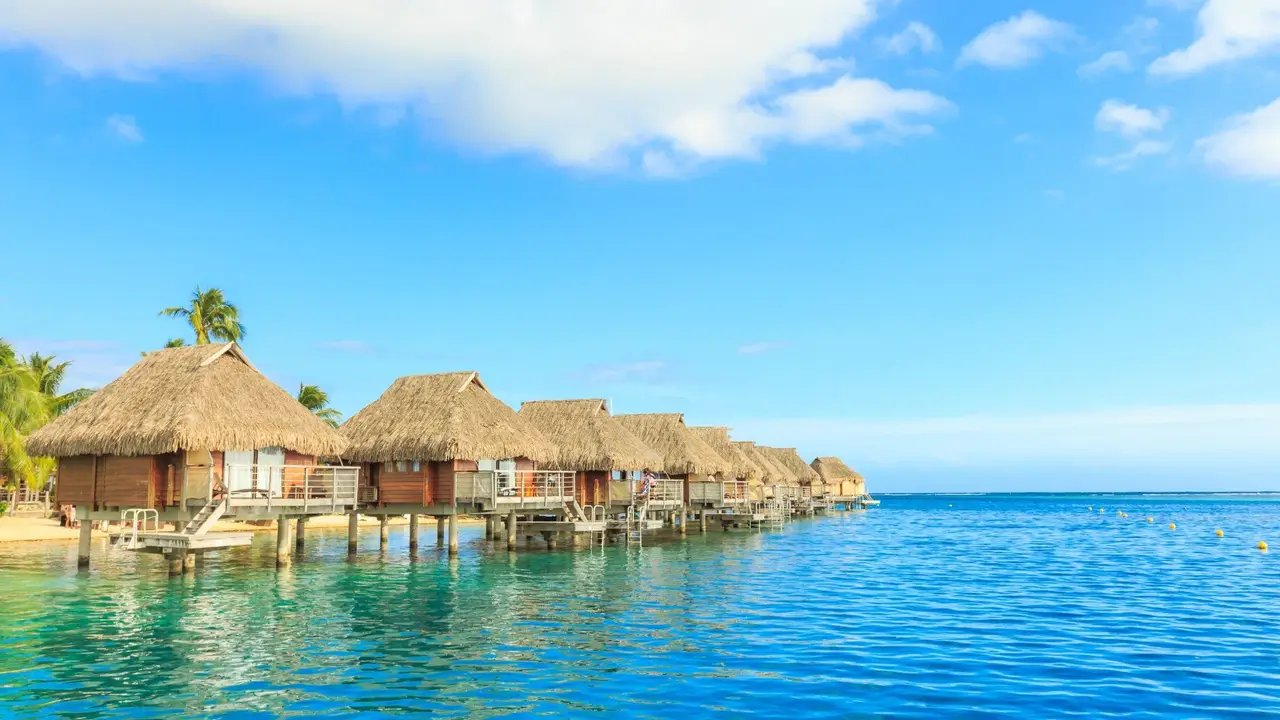Best Underwater Cameras for Beginners
Review of user-friendly underwater cameras perfect for new photographers to capture stunning marine life.

Best Underwater Cameras for Beginners
Why Start Underwater Photography as a Beginner
So, you've caught the diving bug, right? And now you're looking at all those amazing creatures and vibrant corals, thinking, "Man, I wish I could capture this!" Well, you're in luck because underwater photography for beginners has never been more accessible. Gone are the days when you needed a massive budget and a degree in engineering just to get a decent shot. Today, there are fantastic, user-friendly options that let you dip your toes into this incredible hobby without drowning in complexity or cost. Starting out with the right gear means you can focus on what truly matters: enjoying your dive and getting some memorable shots of that majestic manta ray or those playful clownfish. It's about preserving those fleeting moments and sharing the magic of the underwater world with friends and family.Key Features to Look for in Beginner Underwater Cameras
When you're just starting, you don't need all the bells and whistles. What you need is reliability, ease of use, and good image quality. Let's break down some key features:Image Quality and Sensor Size for Underwater Photos
This is crucial. A larger sensor generally means better image quality, especially in low light conditions, which is pretty much every underwater environment. Look for cameras with at least a 1-inch sensor if your budget allows. This will give you richer colors and more detail. Megapixels aren't everything, but a decent number (12MP and up) helps with cropping and printing.Ease of Use and User Interface for New Divers
As a beginner, you want a camera that's intuitive. Think simple menus, easy-to-reach buttons, and perhaps even a 'point and shoot' mode that works well underwater. You don't want to be fumbling with settings when that once-in-a-lifetime shark swims by. Some cameras offer dedicated underwater modes that automatically adjust settings for optimal results.Waterproof Rating and Durability for Diving
Obviously, it needs to be waterproof! Check the depth rating. Most compact cameras are rated for 15-20 meters (50-65 feet) without an external housing, which is fine for snorkeling or shallow dives. For deeper dives, you'll definitely need a dedicated underwater housing. Durability is also key – you want something that can withstand a few bumps and scrapes.Battery Life and Storage for Extended Dives
Nothing's worse than running out of battery mid-dive. Look for cameras with decent battery life, or consider carrying a spare. As for storage, memory cards are cheap, so get a large one. You'll be surprised how many photos and videos you'll take!Connectivity and Sharing Options for Your Underwater Shots
Being able to quickly transfer your photos to your phone or computer is a huge plus. Wi-Fi and Bluetooth connectivity make sharing your amazing shots on social media a breeze. Some cameras even allow you to control them remotely via an app, which can be handy for certain setups.Top Recommended Underwater Cameras for Beginners
Alright, let's get to the good stuff. Here are some of the best options for beginners, along with their pros, cons, and typical price ranges.GoPro Hero Series The Action Camera King for Divers
Product: GoPro Hero 12 Black
Description: The GoPro Hero series is synonymous with action cameras, and for good reason. They're incredibly versatile, compact, and surprisingly capable underwater. The Hero 12 Black is waterproof down to 10 meters (33 feet) without a housing, and with its dedicated SuperSuit housing, it can go down to 60 meters (196 feet). It shoots stunning 5.3K video and 27MP photos, and its HyperSmooth stabilization is a game-changer for shaky underwater footage. It's super easy to use, with intuitive touchscreens and voice control. Plus, the vast ecosystem of accessories means you can customize it for almost any scenario.
Pros: Excellent video quality, superb stabilization, very compact, wide range of accessories, easy to use, great for both photo and video.
Cons: Small sensor can struggle in very low light, requires an external housing for deeper dives, battery life can be an issue with heavy use.
Typical Price: Camera: $399.99, SuperSuit Housing: $49.99
Use Case: Perfect for divers who want to capture high-quality video of their adventures, share quick clips on social media, and don't mind the action camera aesthetic. Great for wide-angle shots of reefs and large marine life.
Olympus Tough TG Series The Rugged Point and Shoot for Underwater
Product: Olympus Tough TG-7
Description: The Olympus Tough TG series has long been a favorite among divers, and the TG-7 continues that legacy. It's built like a tank, waterproof down to 15 meters (50 feet) without a housing, and can withstand drops, crushes, and freezing temperatures. What sets it apart for underwater photography is its excellent macro capabilities right out of the box, allowing you to get incredibly close to small critters. It also has dedicated underwater modes and a bright f/2.0 lens, which helps in dimmer conditions. With its PT-059 underwater housing, it can go down to 45 meters (147 feet).
Pros: Extremely durable, excellent macro capabilities, good low-light performance for a compact, dedicated underwater modes, easy to use.
Cons: Smaller sensor than some mirrorless options, fixed lens limits versatility, video capabilities are good but not GoPro-level.
Typical Price: Camera: $549.99, PT-059 Housing: $349.99
Use Case: Ideal for divers who want a robust, reliable camera that's great for both wide-angle and macro shots, especially if they're interested in capturing small marine life. It's a true point-and-shoot workhorse for underwater.
Sealife Micro 3.0 The Dedicated Underwater Camera
Product: Sealife Micro 3.0
Description: The Sealife Micro 3.0 is unique because it's a completely sealed, flood-proof camera designed specifically for underwater use. You never have to open it to change batteries or memory cards, which significantly reduces the risk of flooding. It's waterproof down to 60 meters (200 feet) right out of the box, no external housing needed! It features a 16MP sensor, shoots 4K video, and has a wide-angle lens. It's incredibly simple to operate, with large 'piano key' controls that are easy to use even with gloves on. It also has built-in color correction filters for different depths.
Pros: Completely flood-proof, no housing needed for deep dives, very easy to use, compact, good battery life, built-in color correction.
Cons: Fixed lens, image quality is good but not top-tier compared to larger sensor cameras, no removable battery (recharge via USB).
Typical Price: Camera: $599.95
Use Case: Best for divers who prioritize ultimate reliability and simplicity. If you're worried about flooding or just want a truly hassle-free underwater camera that you can grab and go, this is an excellent choice. Great for general wide-angle reef shots and video.
Canon PowerShot G7 X Mark III A Compact with a Big Sensor for Quality
Product: Canon PowerShot G7 X Mark III (with housing)
Description: While not waterproof on its own, the Canon G7 X Mark III is a fantastic compact camera that, when paired with a dedicated underwater housing (like those from Fantasea, Ikelite, or Nauticam), becomes a powerful underwater photography tool. It boasts a large 1-inch 20.1MP sensor, which delivers excellent image quality, especially in terms of dynamic range and low-light performance. It also shoots 4K video. Its manual controls and RAW image capability give you more flexibility for post-processing, which is great if you want to grow into the hobby. It's a step up in complexity but offers significantly better image quality than the more rugged point-and-shoots.
Pros: Excellent image quality due to large sensor, good low-light performance, RAW capability, 4K video, versatile for both land and underwater use (with housing).
Cons: Requires an expensive external housing, not waterproof without housing, more complex to operate than dedicated underwater cameras, larger setup.
Typical Price: Camera: $749.99, Housing (e.g., Fantasea FG7X III): $499.99 - $700+
Use Case: For beginners who are serious about image quality and want room to grow. If you're willing to invest in a housing and learn a bit more about camera settings, this setup will reward you with stunning photos and videos. Great for both wide-angle and macro (with additional wet lenses).
:max_bytes(150000):strip_icc()/277019-baked-pork-chops-with-cream-of-mushroom-soup-DDMFS-beauty-4x3-BG-7505-5762b731cf30447d9cbbbbbf387beafa.jpg)






